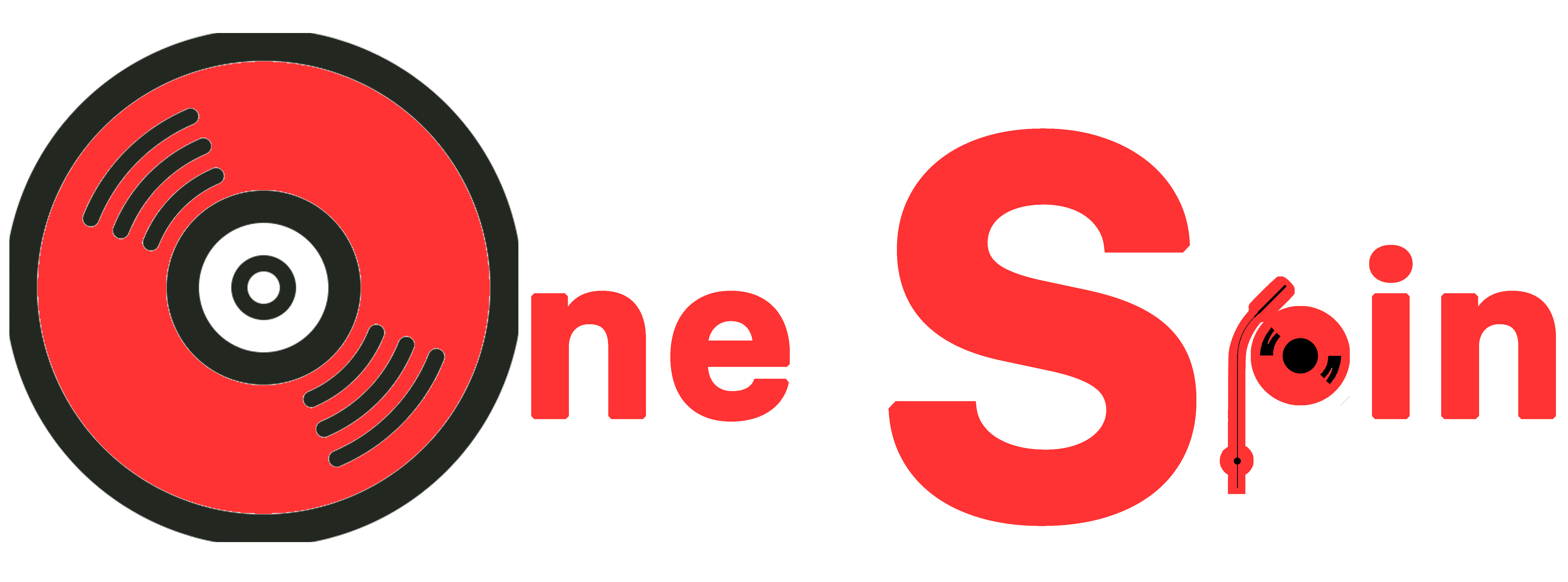Before online streaming cannibalized the time-honored format of the LP and inundated the music industry with endless playlists, album covers grabbed eyes of music consumers and the imaginations of aspiring artists alike. They served as conversation pieces and occasionally could sell records by themselves—if they were funky, innovative, or mind-blowing enough. With so many choices to choose from, no list could possibly be definitive, but here’s one music lover’s top ten selections for the best album covers of all time.
10. Blink-182 — Enema Of The State
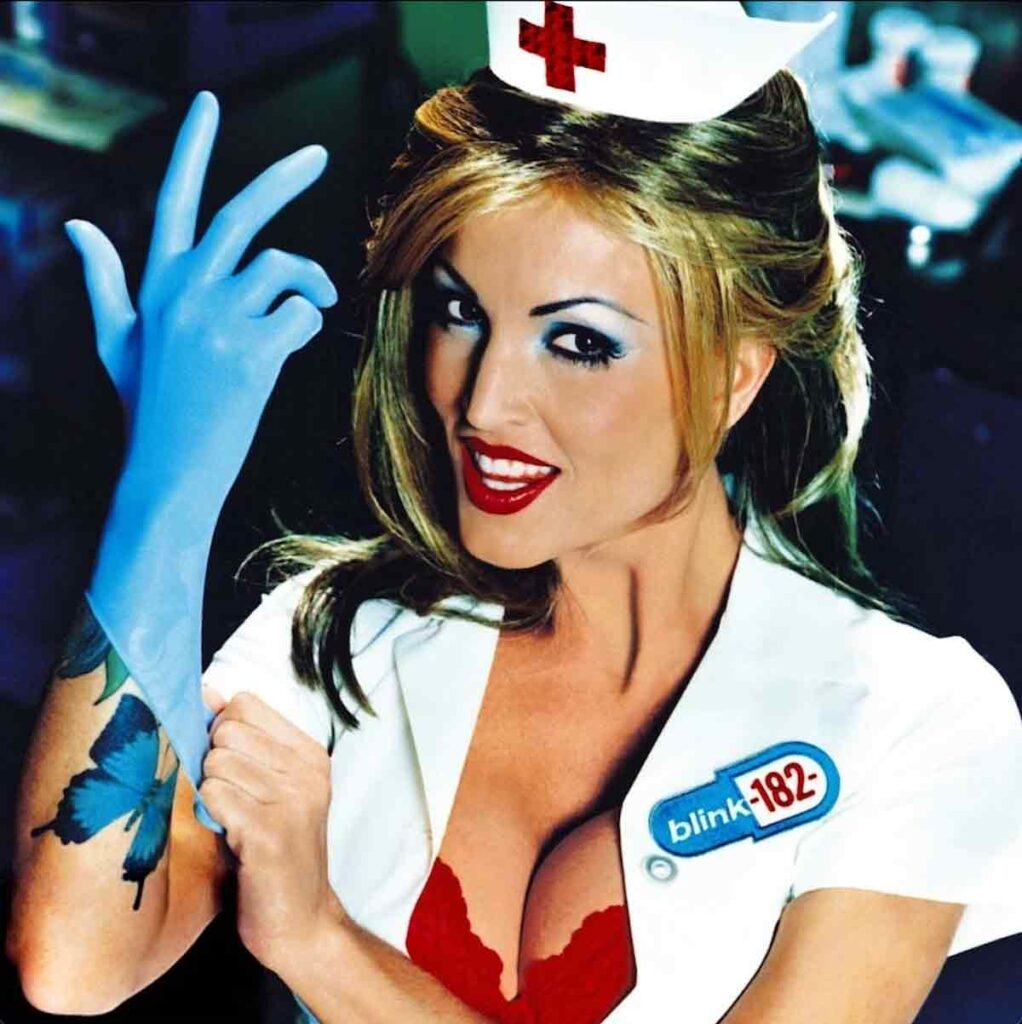
Most album artwork that has aimed to encapsulate sex has involved a degree of nudity or depiction of some stage of coitus. While those may have succeeded or failed on varying levels, none were nearly as original (or as juvenile) as Blink-182’s sexual comedy and play on the album’s title. Hiring pornographic actress Janine Lindermulder to pose as a nurse putting on a rubber glove, the childish fetisization jived well with the band’s simplistic music, and the image became burned into the consciousness of the early 00’s punk-rock revival.
9. Pink Floyd — Wish You Were Here
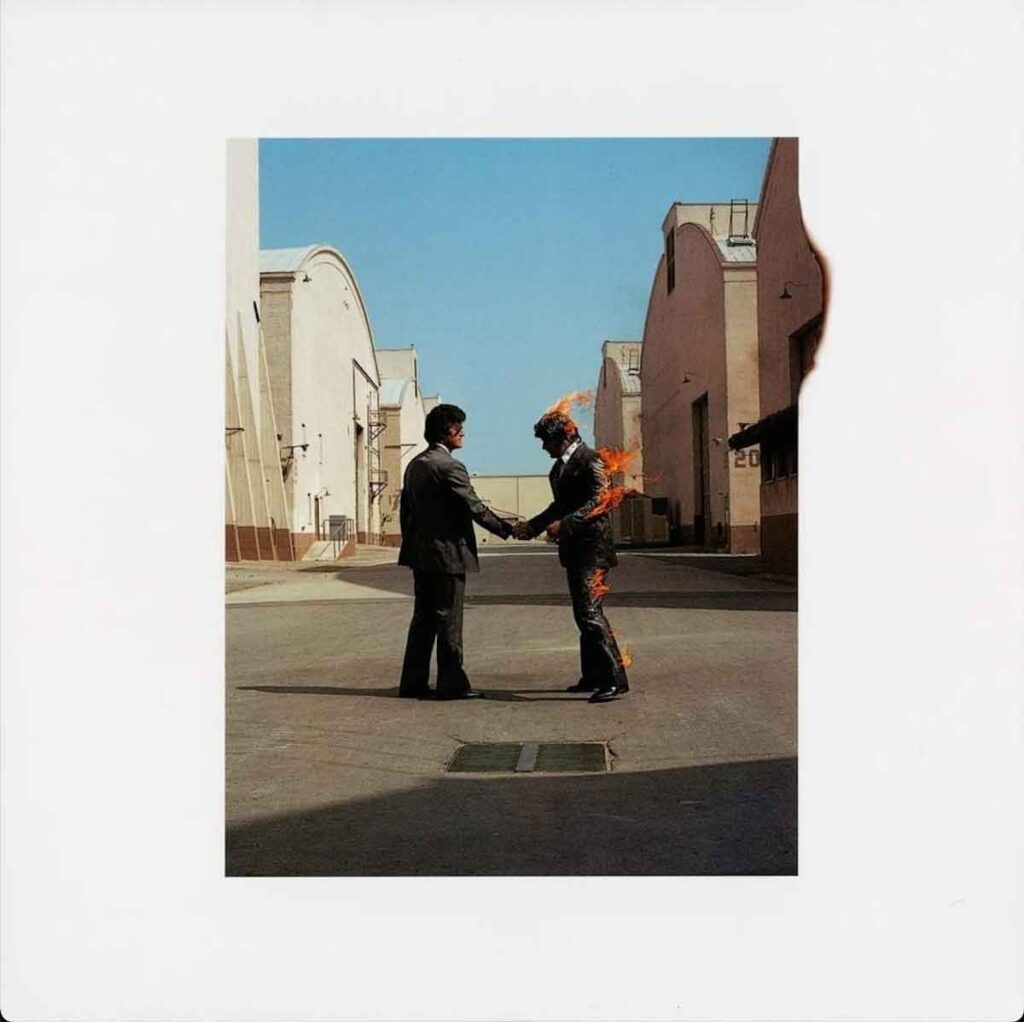
One of many examples of Storm Thorgerson’s contributions to cover art, this eerie masterpiece surprises some to learn that it is a photograph and not an artist’s rendering. Shot at Warner Bros. Studios, with one stuntman wearing a fireproof suit, the image references both “getting burned” and “making a deal with the devil,” two terms that musicians had become accustomed to using in the cut-throat—and sometimes theft-ridden—music industry of the ‘70s. Add in the empty-suited salesman on the back sleeve and the splashless diver in the liner notes and Wish You Were Here was legendary before even putting the vinyl on the turntable.
8.The Slits — Cut
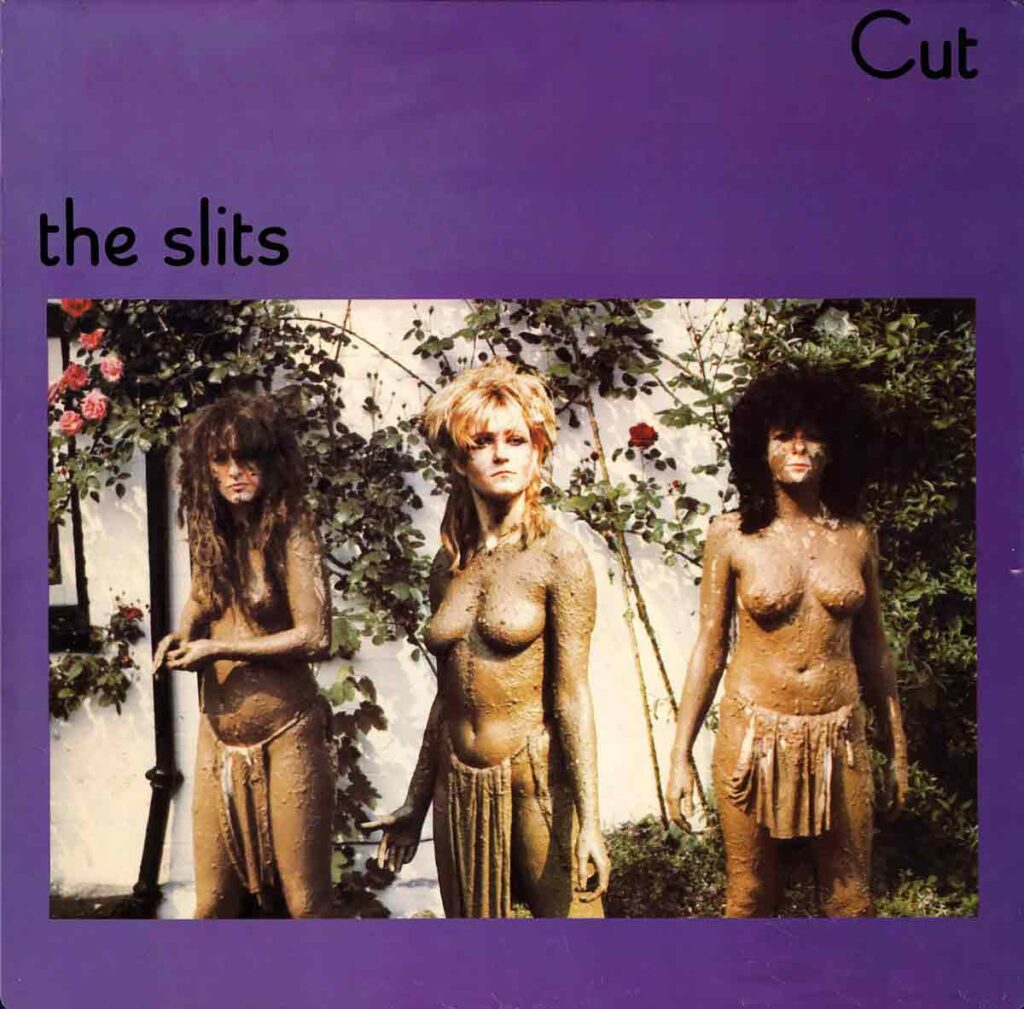
Most people would opt for Nirvana’s Nevermind to take the token slot reserved for cover nudity, but although shocking to some in 1991, Cut’s image of three topless women, dressed like primitive warriors smeared in mud, exhibits just the right amount of seriousness. For one, the women on the cover are none other than The Slits themselves, looking as fierce and fearless as their idiosyncratic music. And the original male photographer recommended by Island Records was tossed in favor of a fellow female Pennie Smith, making this a great example of the beginning of the “grrl power” rock movement.
7. U2 — War
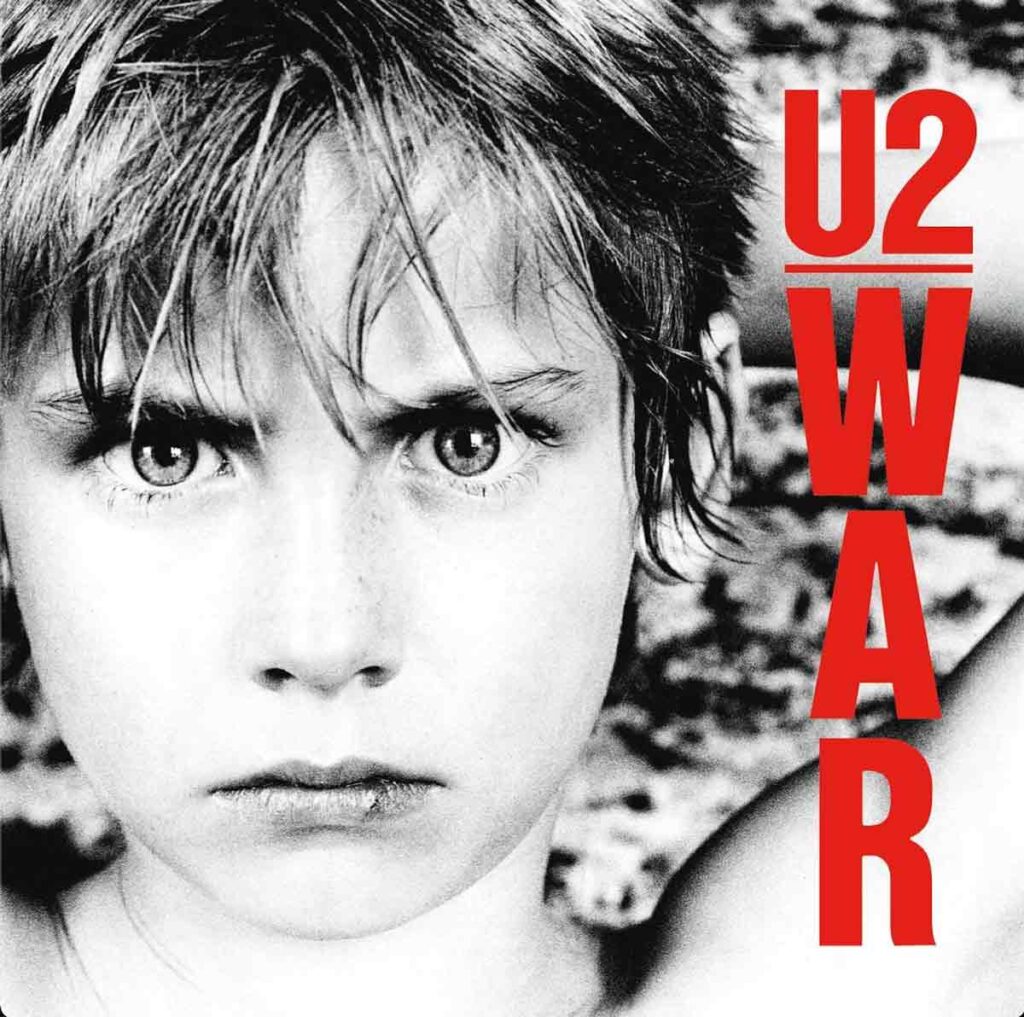
Two years before the famous piercing eyes of a young woman graced the cover of a National Geographic monthly about the Afghan War, a band from Ireland found a striking title and a young boy with equally striking eyes to express their opinion on the state of the world. The image of a child next to the word “War” in big red letters created a stark juxtaposition that grabbed the attention of music consumers and the industry at large. U2 would go on to have greater musical successes, but this was their first great album, and unmistakably their most captivating cover.
6. Funkadelic — Maggot Brain
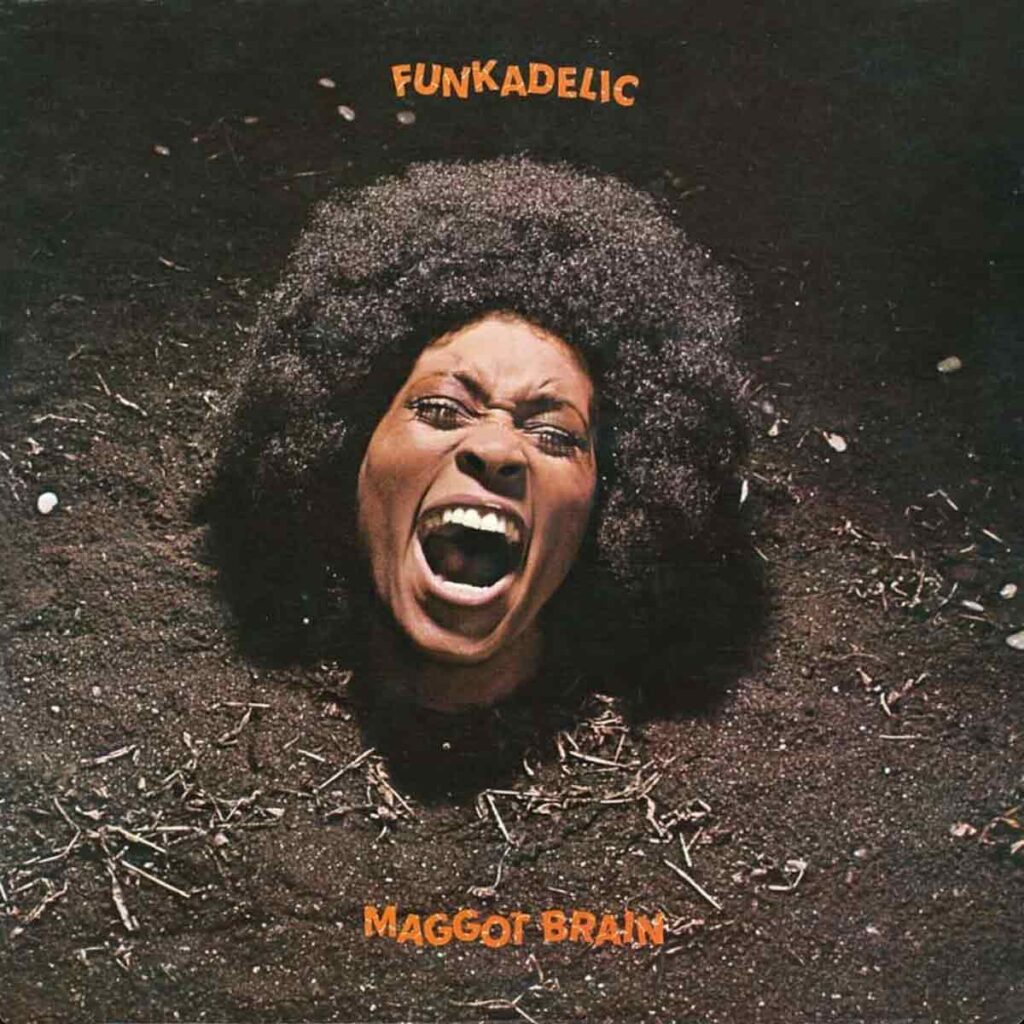
The disturbing image of Barbara Cheeseborough’s screaming head emerging from a pile of dirt coupled with the biblical liner notes made Maggot Brain appear as if Funkadelic was a satanic heavy metal band in the vein of Black Sabbath or Iron Butterfly. The photograph and the demonic attitude it conveyed helped introduce the band to a wider audience and previous fans to a harder, darker, more expansive side of the band’s repertoire. The original Funkadelic lineup imploded soon after, but the haunting cover shot remains a classic.
5. Miles Davis — Bitches Brew
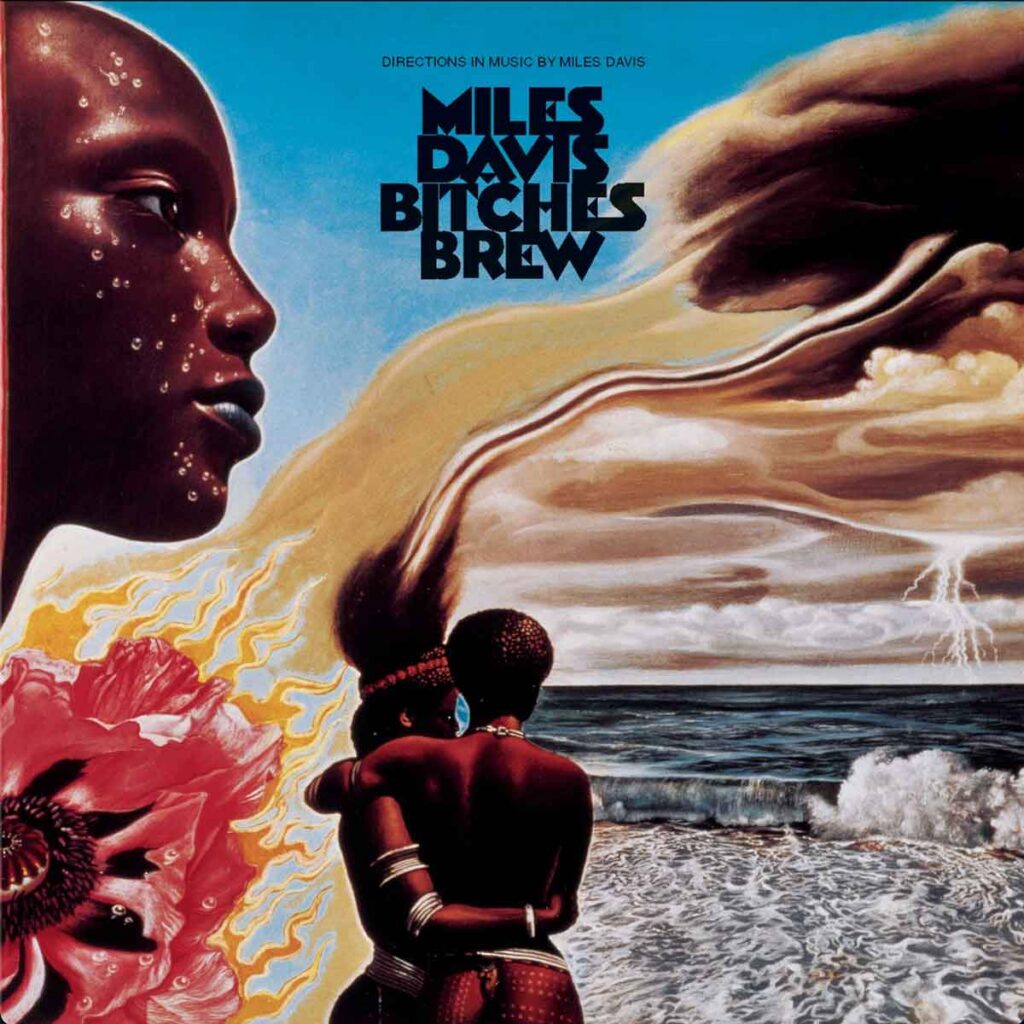
The surreal, drippy painting that adorns Bitches Brew’s cover fits one of Miles Davis’s most popular albums perfectly. As multi-themed and flowing as the jazz-rock fusion contained within, it was a departure from Davis’s previous cover art that had mostly consisted of portraits and art-deco stylings. While classic rock fans might point to Santana’s Abraxas and III as better examples of the style, this release pre-dates them both, and helped to introduce jazz to psychedelia.
4. The Velvet Underground & Nico — The Velvet Underground & Nico
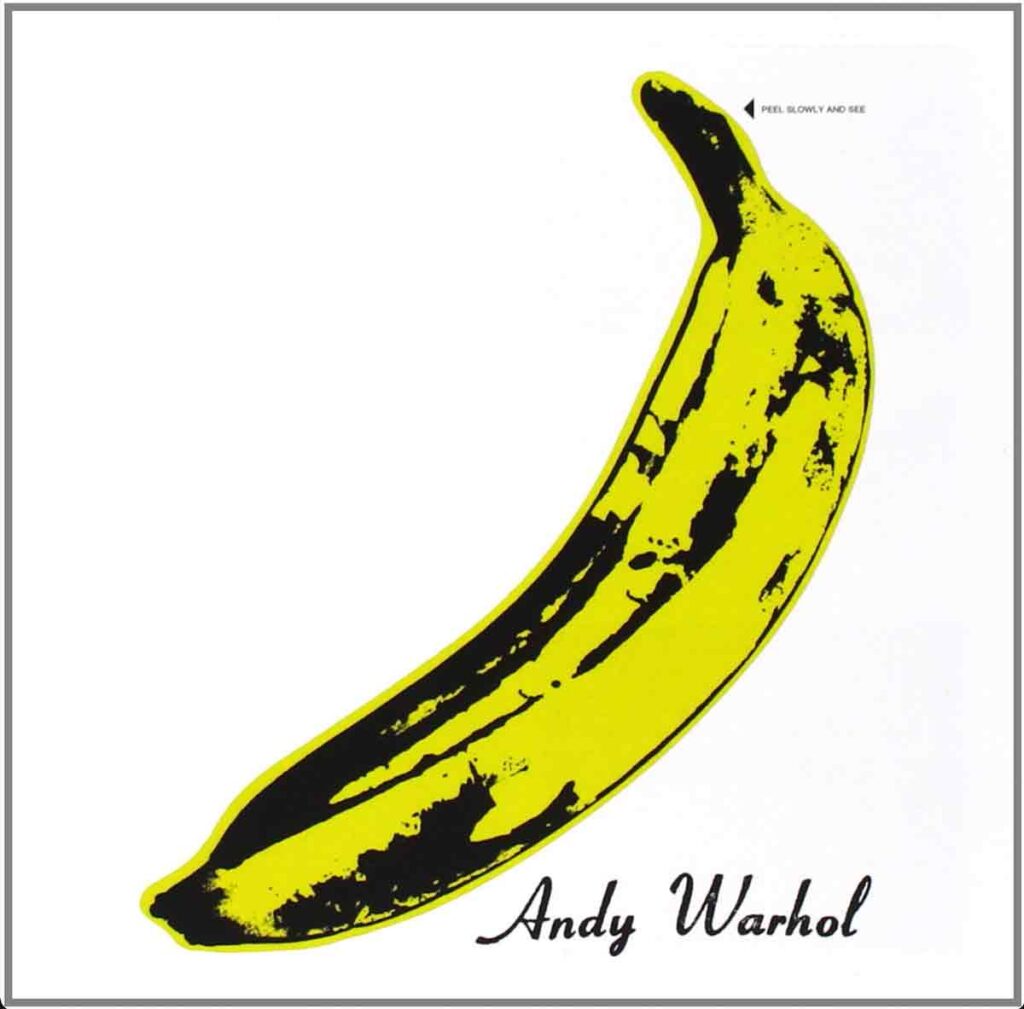
Now seen as its own piece of pop art, the iconic Warhol Banana Print introduced the world to the avant-garde godfathers of alternative music, The Velvet Underground. Cut from the same artistic scene, the visual and the audio were perfect bedfellows. Expensive to produce, and eventually cumbersome enough to delay the album’s release, the jacket featured a sticker that the listener was implored to “Peel slowly and see,” revealing another pink colored banana underneath. Artsy to a fault and not practical, reissues rarely featured the original peelable sticker and thus original pressings of the album now sell for exorbitant prices.
3. The Notorious B.I.G. — Ready To Die
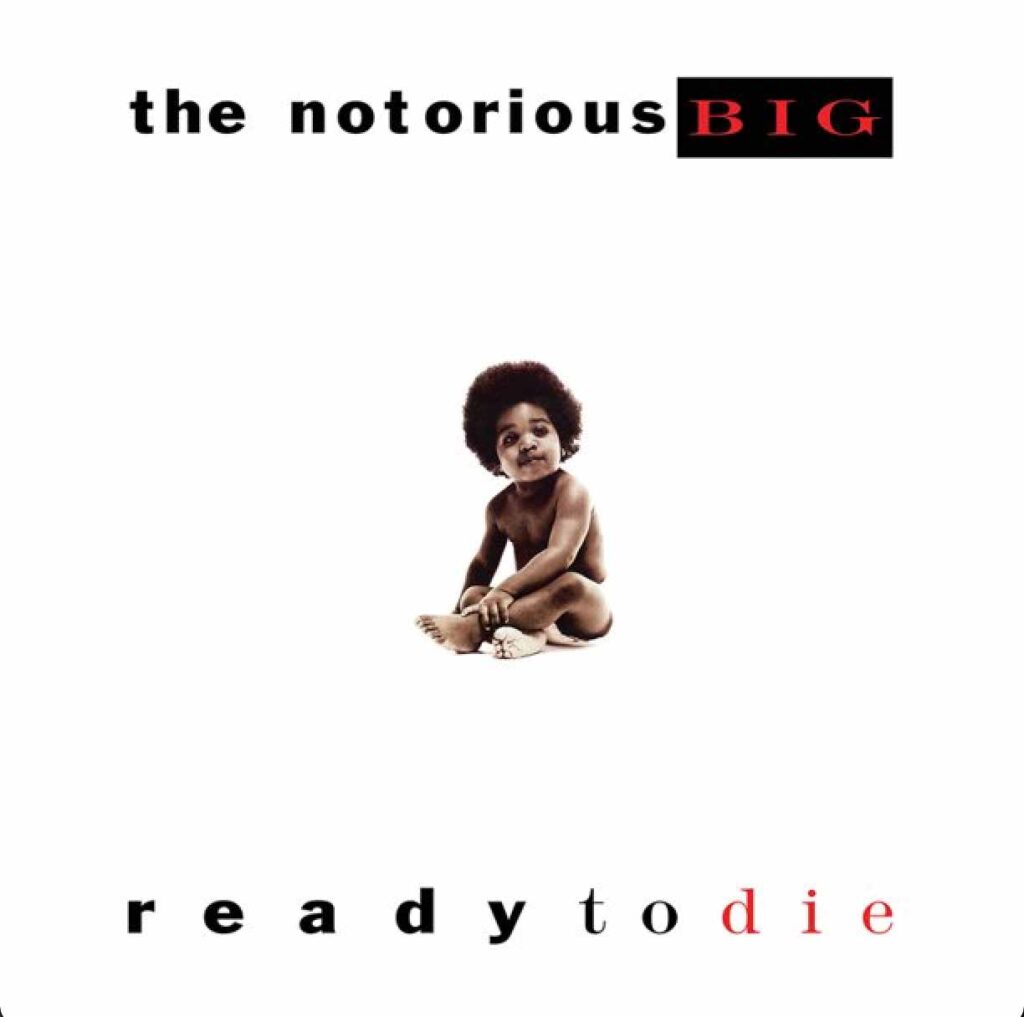
There’s something innocent, vulnerable, and life-affirming about a diaper-clad baby wearing a contented half-smile on his face, but something very disconcerting about him appearing on an album cover above the words Ready To Die. The semi-autobiographical musical content within was equally sweet, scary, and just about anything in between, becoming a musical juxtaposition that matched the equally jarring cover. One of the more basic designs—just one picture, a title, and an artist—it conveys so much more than many other high-minded designs.
2. Pink Floyd — Dark Side Of The Moon
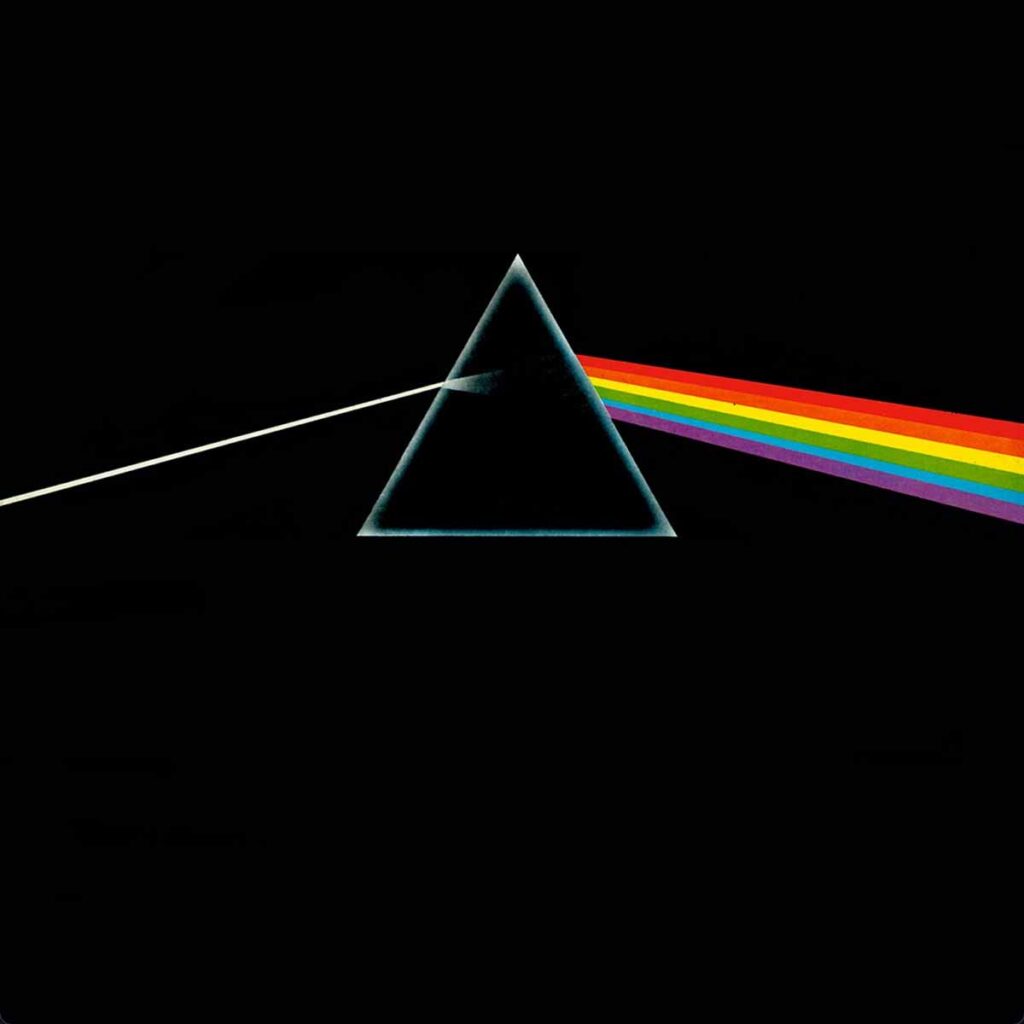
Another exercise in “less is more,” the cover design of Dark Side Of The Moon may be one of the most basic but recognizable images in popular music. An angled beam of light hitting a dark opaque prism, coming out the other side at a different angle as a spectrum of colors, all set against a simple black background…it reveals little about the album. However, once heard it makes complete sense, but if you ask a hundred people, you’ll likely get a hundred explanations as to why.
1. The Beatles — Abbey Road
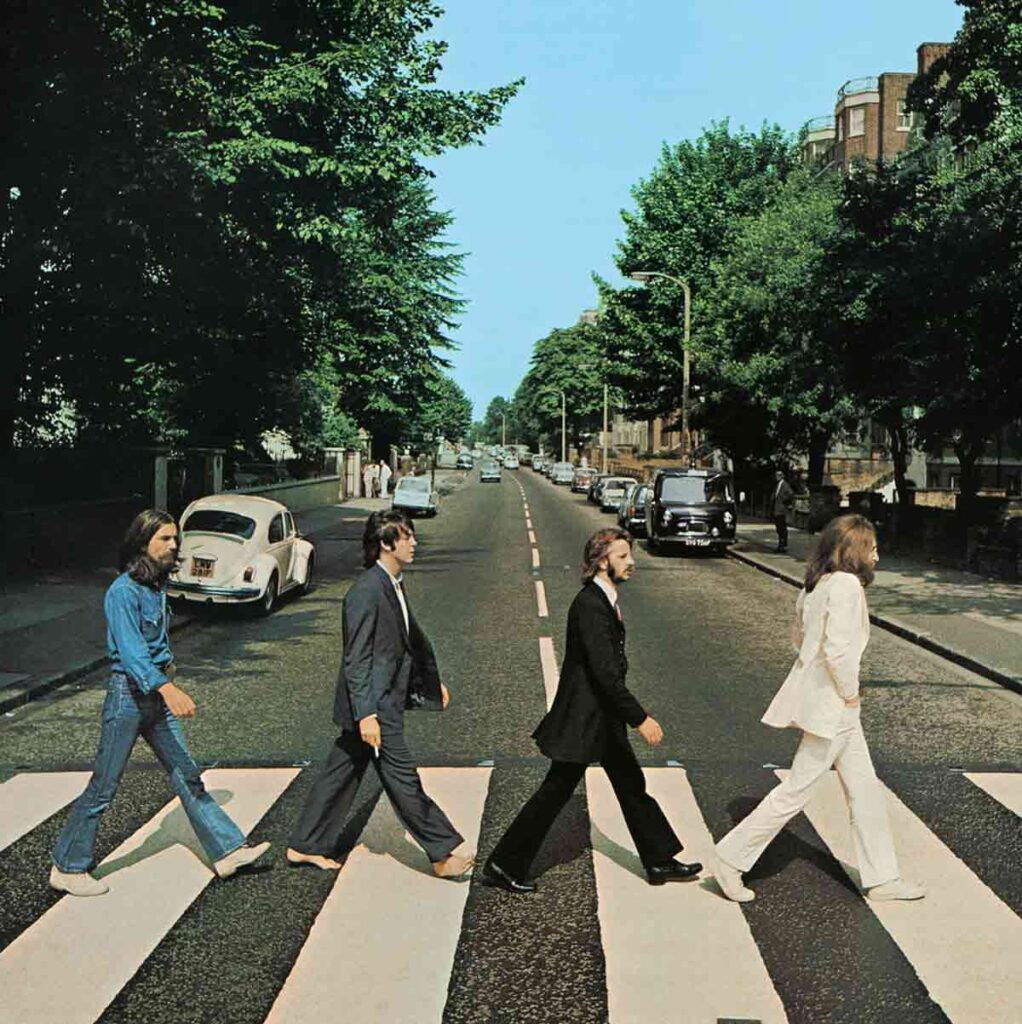
The most iconic image in all of music has been recreated, parodied, and referenced countless times. It’s only four men, equally spaced, casually walking across the street for which the album is named. Created on a whim in part to come up with the name for the album they were finishing, the Abbey Road cover doesn’t feature either the band’s name, nor the title. By that time it didn’t matter. Every music fan in the world recognized their faces, and now any allusion to the cover, however small, is usually appreciated by any culturally literate adult. Due to the album’s musical quality, it will continue to be understood for the foreseeable future.
